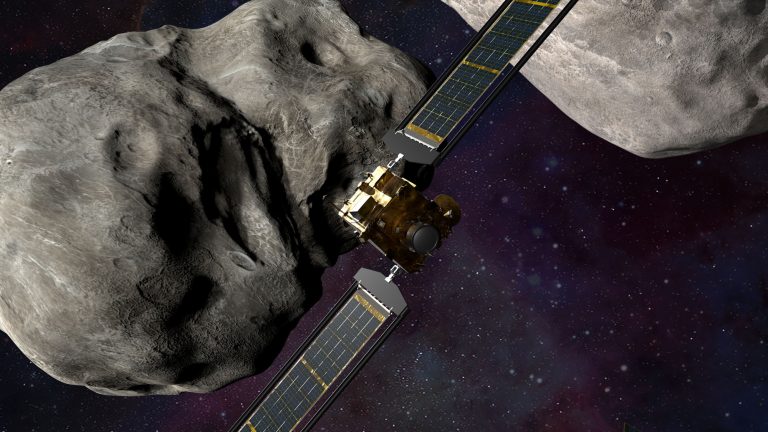On Nov. 24, NASA launched the world’s first test mission aimed at defending earth from dangerous asteroids. The Double Asteroid Redirection Test (DART) was launched at 1:21 am EST from the Vandenberg Space Force Base in California on a SpaceX Falcon 9 rocket.
The test will hit an asteroid that is known to pose no threat to earth. The clash is expected to change the course of the asteroid, which will provide valuable data to scientists that might help prepare for any real-life asteroid impact scenarios in the future. LICIACube, a CubeSat on the DART mission, will detach before the impact, taking images of the collision as well as the resulting debris.
The mission, which cost $325 million, is targeting a binary asteroid, a pair of asteroids that orbit each other. The larger of the two, Didymos, is roughly 780 meters across. The smaller one, Dimorphos, is around 160 meters in width and is the asteroid that the DART mission is targeting. DART will crash into Dimorphos at a speed of around 15,000 miles per hour roughly 6.8 million miles from earth. The impact is predicted to change its speed and orbit around Didymos.
“DART is turning science fiction into science fact and is a testament to NASA’s proactivity and innovation for the benefit of all… In addition to all the ways NASA studies our universe and our home planet, we’re also working to protect that home, and this test will help prove out one viable way to protect our planet from a hazardous asteroid should one ever be discovered that is headed toward Earth,” NASA Administrator Bill Nelson said in a statement on Nov. 24.
At present, DART is on a 30-day commissioning period. Eight days after launch, the mission scientists will activate DRACO (Didymos Reconnaissance and Asteroid Camera for Optical navigation), the main scientific instrument which will capture images during the mission. About 20 days into the mission, the team will kick off the Evolutionary Xenon Thruster-Commercial (NEXT-C) engine that is developed by aerospace company Aerojet Rocketdyne and NASA’s Glenn Research Center.
Success
You are now signed up for our newsletter
Success
Check your email to complete sign up
“NEXT-C is a solar-powered ion propulsion system that could find its way onto future spacecraft. It’s not DART’s primary propulsion system — the probe is using a set of 12 hydrazine thrusters to make its way toward the Didymos-Dimorphos pair — but NEXT-C will get a key in-space test during the mission,” according to Space. DRACO will image the asteroids 30 days prior to impact. LICIACube will activate 10 days before impact.
Some people have raised concerns about the collision altering the path of Dimorphos in a way that it might end up actually heading towards earth. Scientists at NASA do not think it is possible. The impact of DART on the asteroid will be minimal to not cause any large changes but will still be enough for scientists to take valuable measurements. However, a study from March 2020 pointed out that debris from the collision might be coming to our planet.
“Because the closest point of approach of Didymos to Earth’s orbit is only 6 million km (about 16 times the Earth–moon distance), some ejected material will make its way sooner or later to our planet, and the observation of these particles as meteors would increase the scientific payout of the DART mission. The DART project may also represent the first human-generated meteoroids to reach Earth,” the paper stated.
















